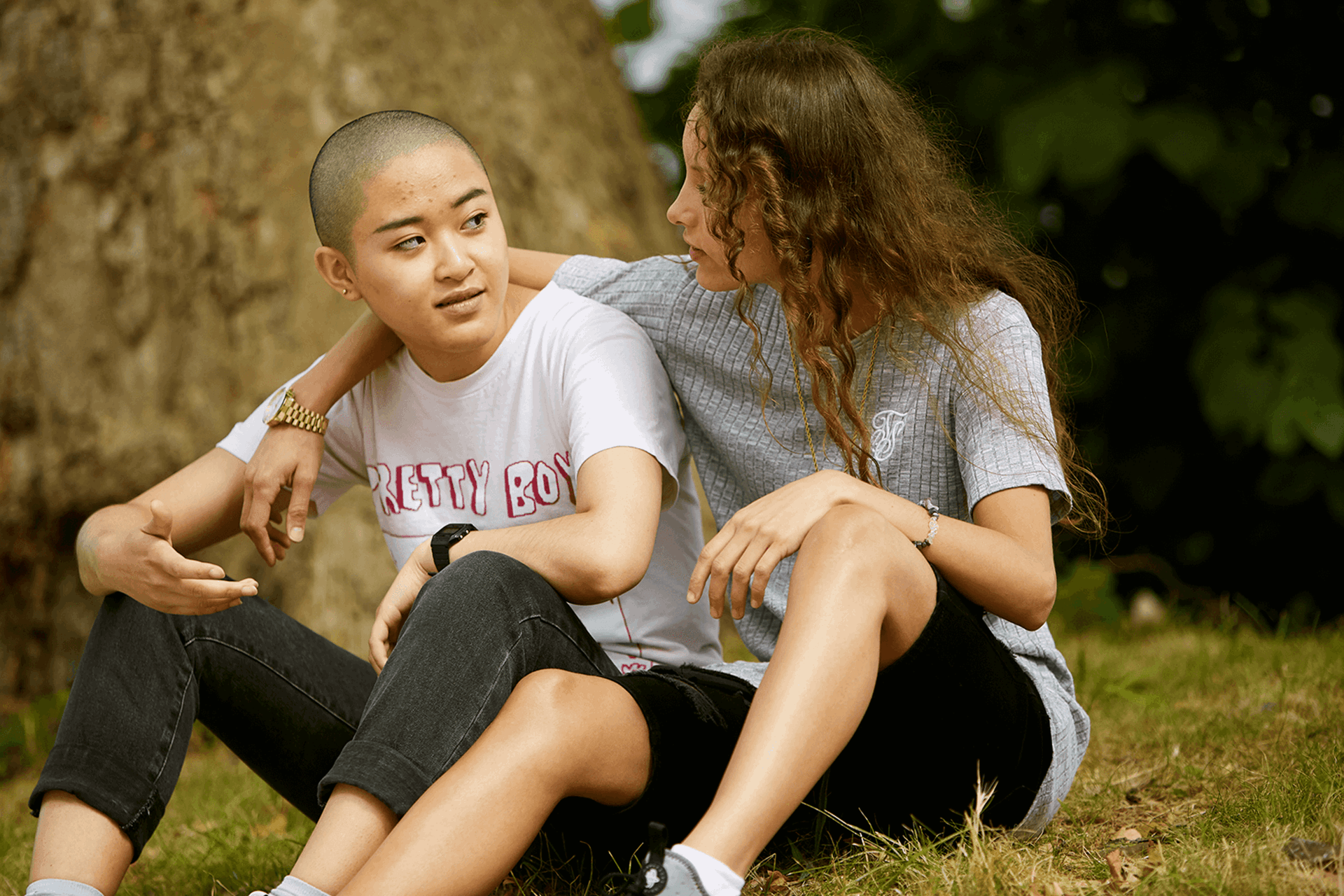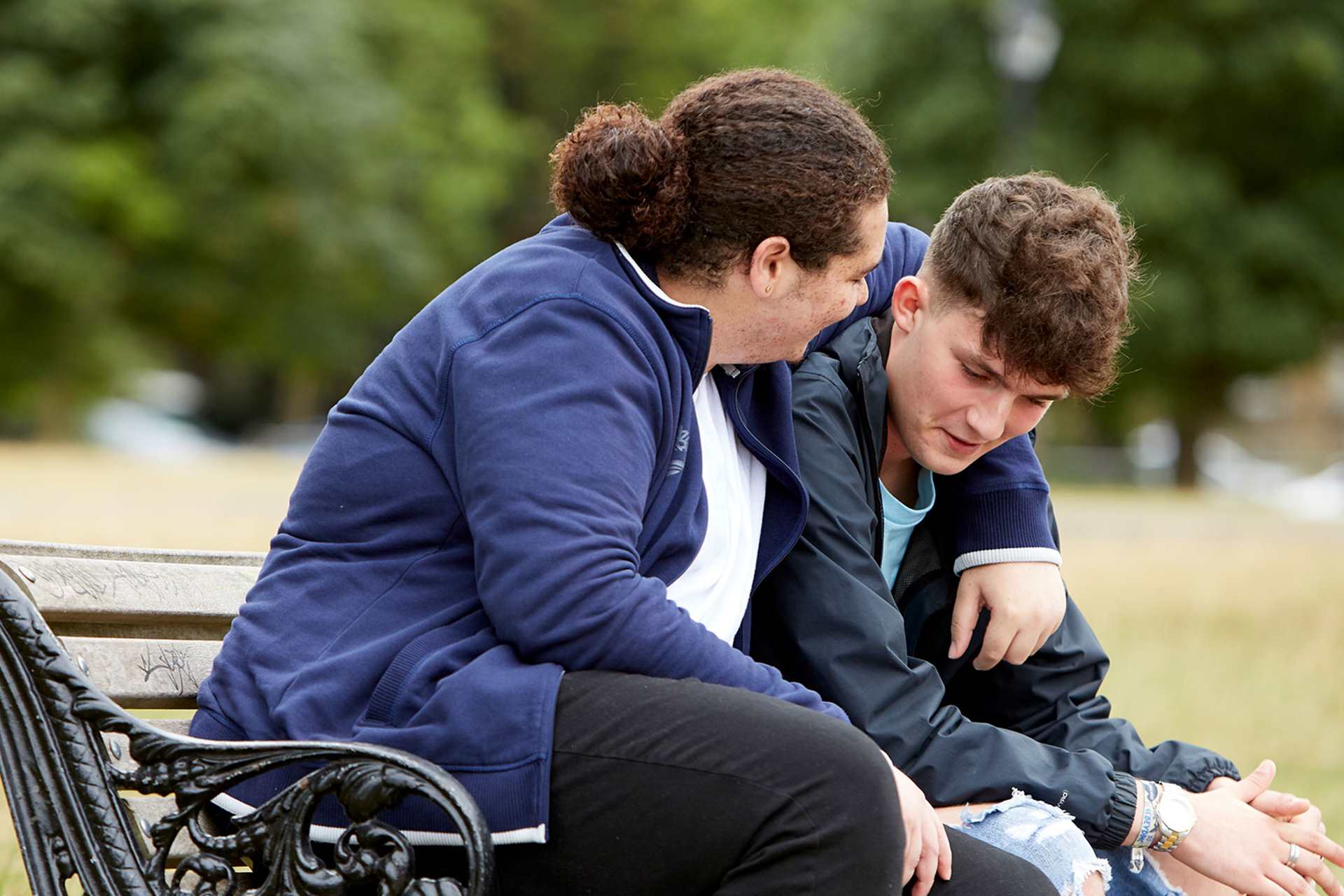Topics mentioned: ARFID, eating problems
About: Macy shares her experience of avoidant restrictive food intake disorder (ARFID), the impact on her mental health, and why it's more than just 'picky eating'.
This blog contains reference to eating problems. Please do not read on if you think the content may be triggering for you. If you are currently struggling with your mental health, please visit our find help page for information, advice and guidance on where to get support.
Imagine everyone around you has a diet that consists entirely of cardboard. Friends eagerly discuss their favourite types of cardboard to eat and their favourite ways of cooking cardboard.
You can’t get through a single day without someone asking you what kind of cardboard you’ll be eating for tea tonight. Restaurant menus are filled with thousands of different kinds of cardboard for you to try. Enjoying a wide variety of cardboard is seen as a significant achievement.
Suggesting that you don’t want to eat cardboard is met with puzzled faces, disbelief, sympathy and even sometimes irritation and annoyance. This is how it feels to have the condition that I have - and a description that many other people suffering will relate to. Welcome to life with avoidant restrictive food intake disorder (ARFID).
My body physically rejected anything other than what my mind deemed ‘safe’. It was like my throat had completely closed and wasn’t working correctly.
What actually is ARFID?
ARFID was only officially recognised as a diagnosis in 2013. It can affect absolutely anyone from all different ages, genders and backgrounds - you do not need to be underweight to have ARFID.
Even though the term ‘ARFID’ was first introduced 11 years ago, it had been controlling my life for many years before that. Unlike other eating disorders, it is characterised by a distinct lack of interest in food and eating, sensory-based avoidance, and/or the concern about the adverse effects of eating.
Items on my plate could not touch each other, and I can’t cope with complex foods which have a mixture of ingredients and textures. I struggled not to eat one food item at a time, in a certain order, and my safe-foods are very brand-specific. If there wasn’t my usual brand available or it was way too expensive, or my mum had tried to sneak an alternative brand, I would know instantly and react to this the same way that I would if a new food was introduced.
I could see live bugs, like maggots and worms, in my food which instantly put me off. But no one understood this and called me ‘delusional’ or that I was ‘making it up for attention’. I also had issues with my foods touching other things even if they were in their packaging. My safe foods could not be in the same cupboard as my family’s food and couldn’t be cooked at the same time as it made it become unsafe for me to eat. I know it might sound confusing, but it’s very real for me!
The foods that a person with ARFID can tolerate are commonly referred to as their ‘safe foods’.
Most people with ARFID typically have less than 10-15 safe foods (that’s single individual items – not full meals!) and it is common for most sufferers to stick to beige, child-like foods. This can mean avoiding entire food groups altogether which are vital for growth and development.
Each person with ARFID has different safe foods. Some people will be able to introduce new safe foods into their diet, often with frequent support from friends and family or a supportive therapist. Some people find that foods which used to be safe are no longer safe because of a change of ingredient or packaging. Safe foods might vary day-to-day, but for others they’re fixed for their whole entire life, which means they live off those foods completely.
Even if I eventually mustered up the courage to put the food into my mouth, before I barely had the chance to chew, I would violently gag/heave and consequently spit the food out due to the sensory issues it caused in my mouth.
My body physically rejected anything other than what my mind deemed ‘safe’. It was like my throat had completely closed and wasn’t working correctly. This is the part other people couldn’t seem to grasp, be it friends, family or even healthcare professionals – the sheer anxiety was horrific.
With ARFID, eating can feel like a constant chore or unnecessary job – it’s just a boring, repetitive cycle and every day is as exhausting as the next. When I finally received a diagnosis, I finally felt like it wasn’t my fault, that I wasn’t broken in a sense. That there was a cause for it all and I wasn’t making it up.
ARFID is a massive struggle, but once you start to understand it more, you can start to adapt your life around it and it’s challenges. You start to free yourself from its constraints and join in with the new adjustments.
When I finally received a diagnosis, I finally felt like it wasn’t my fault, that I wasn’t broken in a sense. That there was a cause for it all and I wasn’t making it up.
More information and advice
We have tips and advice to help you find the support you need. Take a look at our guides.
Where to get help
However you're feeling, there are people who can help you if you are struggling. Here are some services that can support you.
-
Beat
Offers information and support for anybody affected by eating disorders.
One-to-one web chat available. They also run a range of online support groups, which are all fully moderated and anonymous.
Enter your postcode in the HelpFinder to see what eating disorder support is available in your area.
View their information on helpline accessibility and confidentiality.
- Opening times:
- 365 days a year - weekdays (9am - 8pm); weekends (4pm - 8pm)
-
Youth Access
Provides information about local counselling and advice services for young people aged 11-25.
Put in your location and what you need help with into their 'Find help' search, and see what services are available in your area.






